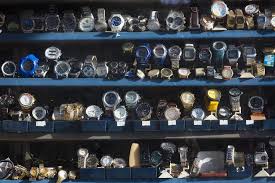Daylight Saving Time started this morning and clocks moved an hour ahead, giving Americans the feeling of one less hour in the morning, which could negatively affect our health.

Morgenthaler has reviewed about 100 medical papers related to how the time change could affect health.
Here’s what you should know:
Sleep
Gaining or losing an hour will likely affect sleep patterns, often for about five to seven days, Morgenthaler said. The most notable changes are in those who regularly do not get enough sleep. People who are sleep-deprived might struggle with memory, learning, social interactions and overall cognitive performance.
“People have more changes in how sleepy they feel or how it affects the quality of their sleep when we ‘spring forward’ than when we ‘fall back,'” Morgenthaler said.
Heart attack or stroke
According to a study led by a University of Colorado fellow in 2014, when Americans lose one hour of sleep in the spring, the risk of heart attack increases 25 percent. When the clock gives back that hour of sleep the risk of heart attack decreases by 21 percent. (The limited study looked at hospital admission data in Michigan over a four-year period.)
A preliminary study presented at the 2016 American Academy of Neurology meeting suggested turning the clock ahead or behind an hour could increase risk of stroke. That’s because disrupting a person’s internal body clock might increase the risk of ischemic stroke, the most common type of stroke, according to researchers. The data showed risk of ischemic stroke was 8 percent higher two days after a Daylight Saving Time.
These studies are two of several on these negative health effects, and they don’t always paint the whole picture, Morgenthaler said.
“Of several published between 2010 and 2014, three studies showed that DST increases the risk of acute myocardial infarctions (AMIs), however, two others demonstrated that the timing (but not the incidence) of strokes and AMIs may be influenced by DST,” Morgenthaler points out.
Crashes
Many have also studied the time change’s impact on vehicle crashes and fatalities. The largest studies that correct for volume and driving activity as well as time of day “show no significant effect” on Daylight Saving Time changes, Morgenthaler said. Still, he cautions to remain aware while driving or walking near a road, especially early in the morning or late at night, after the change.
Here are some tips on how to reset your sleep cycle:
- Make adjustments in increments.
The best way to successfully shift your sleep cycle is to do it gradually, in 15-minute increments. If you have less time to prepare for your new schedule, try 30 minutes, she said. (But no more than that.)
Give yourself at least three or four nights to get comfortable with the new schedule. If it’s going well, on the fourth or fifth night, shave off another 15 minutes.
Keep in mind that feeling groggy when you get up is normal. As Silberman said, “Most people don’t wake up full of energy.” So expect that you’ll feel sleepy for about 20 to 30 minutes.
2. Be consistent all week.
The key to changing your sleep schedule is consistency. That means sticking to the same sleep and wake time throughout the week, including weekends.
If you want to sleep in on the weekends, give yourself an extra hour (two hours max). You may get less sleep on Saturday, but you’ll be back on track for Sunday, she said.
3. Keep your room dark at night and light in the morning.
Our circadian rhythms are influenced by light and darkness. Unfortunately, because of daylight savings, it’s still bright out at 8 p.m., which makes switching into sleep mode tough.
So, at night, close your blinds and curtains, and use a night light for reading. In the morning, “Flip on all the lights to jump start your body,” she said.
4. Wear sunglasses.
Wear sunglasses in the afternoon and early evening to naturally make yourself more sleepy. Sunglasses trick your brain into thinking it’s bedtime.
5.Get up if you can’t sleep.
Don’t lie in bed tossing and turning, especially if you’re wired. Instead, get up and do something either boring or relaxing, she said. If you can’t stop thinking or worrying about something, get it out of your mind by writing it down, she said.
6. Stop pressing the snooze button.
While it might be rough to get up earlier, snoozing doesn’t help. In general it won’t be the best quality of sleep. She said to set your alarm to the time you actually want to wake up.
7. Follow sleep hygiene rules.
If you’re having trouble falling asleep, stop drinking caffeine within 12 hours of your bedtime or exercising within four to five hours. Give yourself an hour to unwind, she said. During that time, don’t do anything stressful or stimulating (such as use electronics).
Many people have trouble with Daylight Saving Time right after the change; but if your sleep is affected every day of the year, you need to contact Alaska Sleep Clinic and speak to one of our board-certified sleep specialists.








